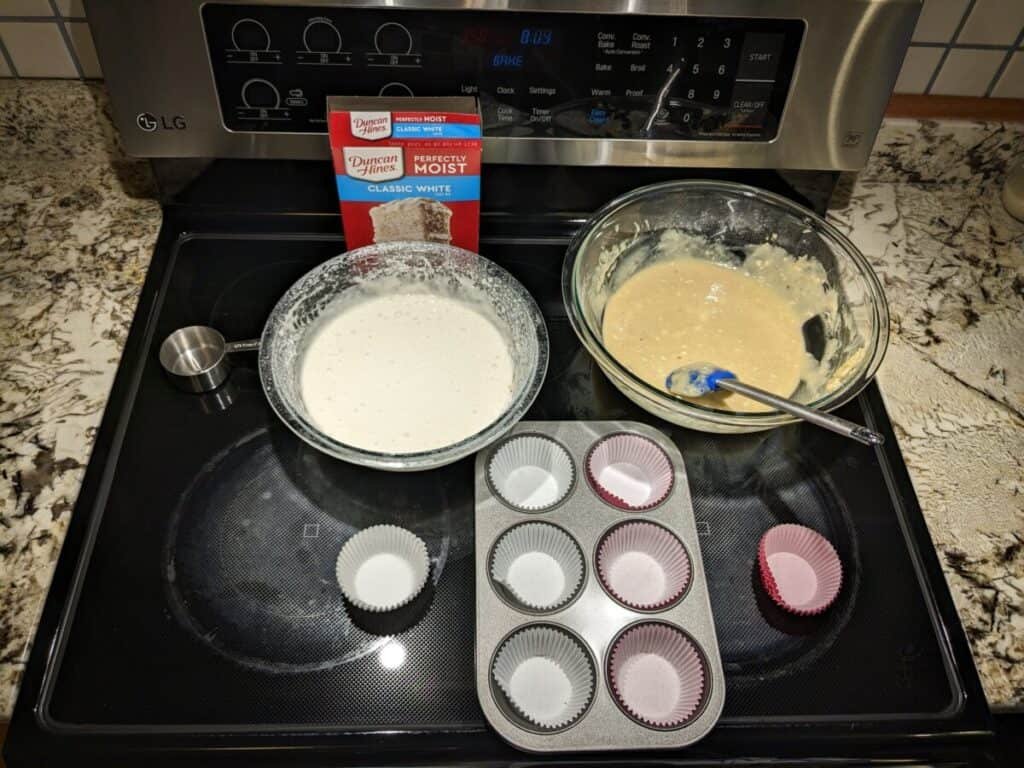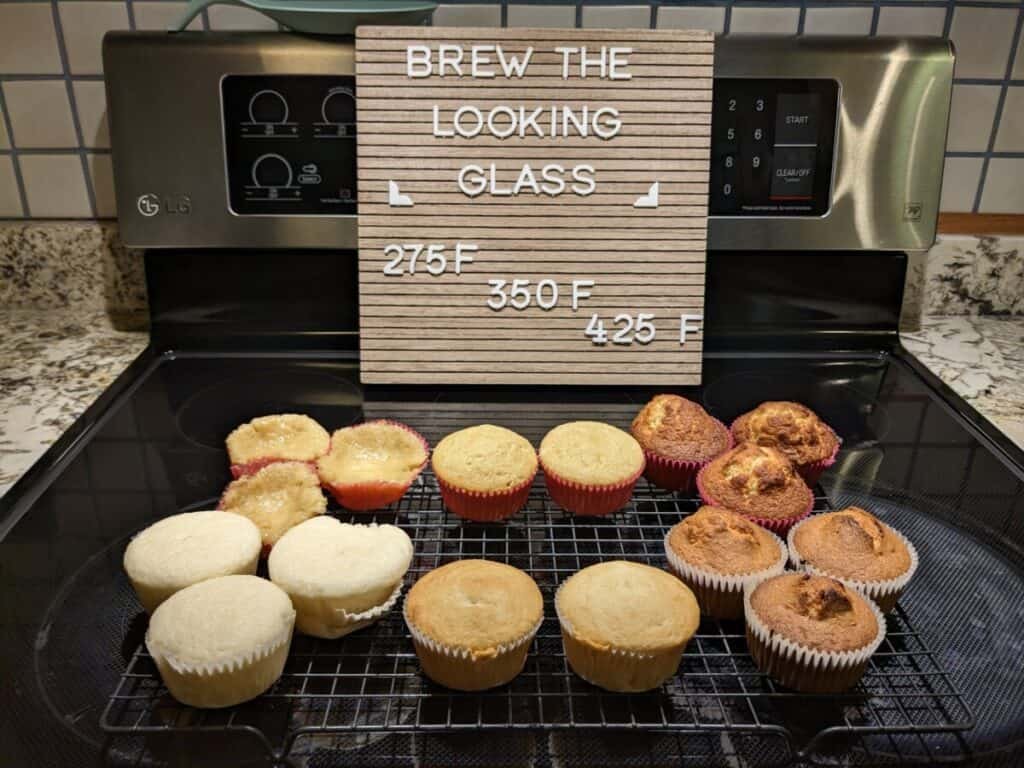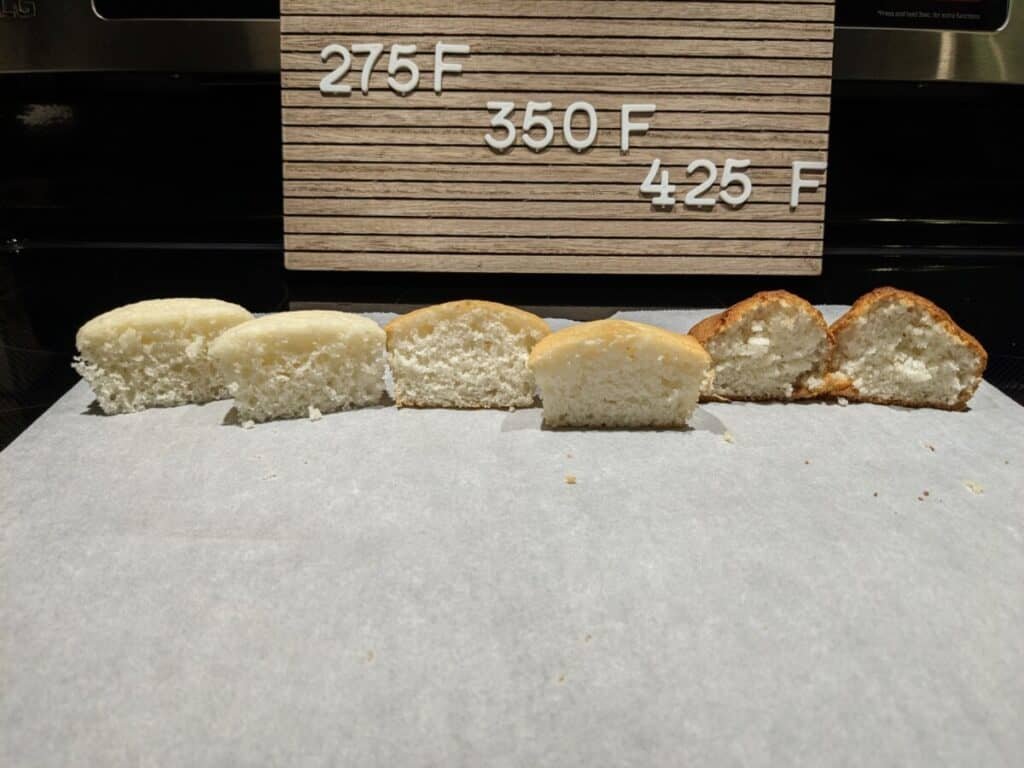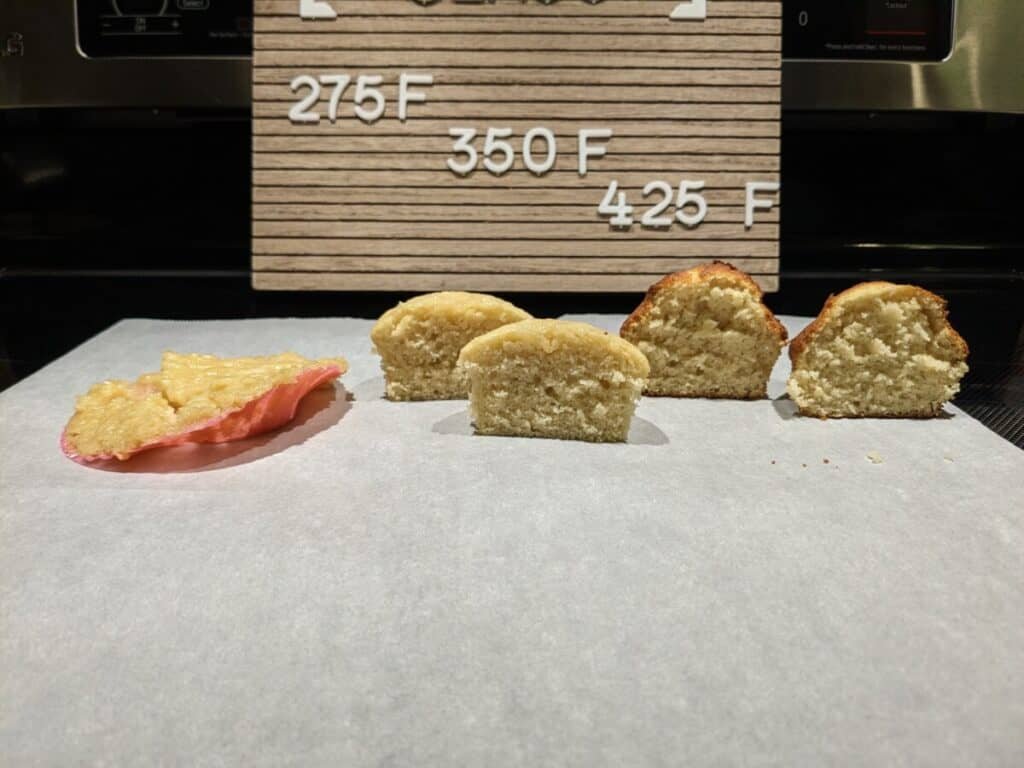It’s easy to get caught up in wanting to brew the hottest craze in craft beer at home. And designing cool recipes is, well, cool. But what I’m going to tell you may seem crazy:
Fermentation is more important than the recipe. Much more, in fact.
Yeast health and fermentation temperature control are bigger contributors to the quality of the final beer than anything done on the hot side.
I’d like to illustrate this with an example that I think everyone–from the beginner to the more advanced brewer–can understand: baking cupcakes.
Time to Bake Some Cupcakes
In this experiment, we’ll be evaluating the effect oven temperature has on cupcakes made from a store-bought mix and cupcakes made from scratch including some “premium” ingredients.
Here, we’re using a cake mix from Duncan Hines as well as using a recipe from King Arthur Baking Company (the original recipe can be found here).1

Mix it up: DH Edition
As an analog to an extract beer kit you would pick up from your local homebrew store (LHBS), we will evaluate how a cake mix will hold up against various oven temperatures.
Ingredients
- 1 box (15.25 oz) Duncan Hines® Perfectly Moist Classic White cake mix
- 1 cup water
- 1/2 cup vegetable oil
- 3 large egg whites
Instructions
- Grease a standard muffin pan.
- In a large mixing bowl, beat cake mix, water, oil, and eggs on low speed for 20-30 seconds. Beat on medium speed for 2 minutes.
- Pour the batter into the prepared pan, using 1/3 cup of batter for each well of the cupcake pan.
- Bake according to the table below.
DJ Scratch: Custom Cupcakes
For the crowd screaming, “yOu CaN’t MaKe gOoD bEeR WiTh ExTrAcT!“, here’s a recipe “from scratch”, as an analog to an all-grain beer recipe.
Ingredients
- 180 g (1 1/2 c) cake or all-purpose flour
- 198 g (1 c) granulated sugar
- 1 1/2 tsp baking powder
- 1/4 tsp salt
- 85 g (6 Tbsp) softened butter
- 2 large eggs (at room temperature)
- 113 g (1/2 c) milk (at room temperature)
- 2 tsp vanilla extract
Instructions
- Grease a standard muffin pan.
- In a large mixing bowl, combine the flour, sugar, baking powder, and salt. Add butter and mix until crumbly.
- In a separate bowl, whisk the eggs, milk, and vanilla extract together.
- Add half of the egg mixture to the dry mixture. Mix well. Add the second half of the egg mixture to the dry mixture. Mix well.
- Pour the batter into the prepared pan, using 1/3 cup of batter for each well of the cupcake pan.
- Bake according to the table below.
Baking Experiment
To evaluate the effect of oven temperature, three temperatures were selected. Cupcakes were baked in a preheated oven for the time prescribed in the table below:
| Trial | Oven Temperature (°F) | Time (minutes) |
| 1 | 275 | 20 |
| 2 | 350 | 20 |
| 3 | 425 | 20 |

Baking Results





As we can see from the pictures above, oven temperature has a significant impact on the consistency, texture, and color of the cupcakes. It seems that the cupcakes made from the store-bought mix held up pretty well to the various oven temperatures. The main difference between the three batches is the color and “moistness” of the interior.
Our cupcakes made from the recipe were not as robust with the various temperatures. At 275 °F, the cupcakes did not fully set up, so they lost their shape when removed from the pan. At 425 °F, a pretty dark crust formed.
I thought the cupcakes baked at 425 °F would have been darker than they actually are. And I’m quite surprised the cake mix cupcakes set up very nicely, even with the lower oven temperature.
Back to Fermentation
What does baking cupcakes have to do with brewing beer?
The purpose of this experiment was to show two things:
- Fermentation temperature (analogous to oven temperature) is very important in making the beer (or cupcakes) you intended to make.
- Can you make good beer (cupcakes) from a kit (mix)? Absolutely yes! You don’t have to only brew beer using all-grain techniques for it to be “good”.
Extract beers, especially homebrews, get a bad rap. And there’s one main reason why people think that beer made from extracts is not very good: most extract homebrewed beer is made by NOVICE homebrewers! Some of the finer techniques that are needed to produce good beer just haven’t been mastered yet by them.
And one of those techniques is adequate fermentation temperature control. Once newer homebrewers start managing fermentation temperature, and thus improving yeast health during fermentation, their homebrew tastes better!
When fermentation temperatures are too low, especially for ales, the yeast may go dormant, and fermentation will either stall or cease.
When fermentation temperatures are too high, the yeast gets stressed and produces a lot of unwanted flavor compounds, or off-flavors.
This applies to both extract and all-grain brewing! It doesn’t matter if you bought the most expensive premium malts available; if you do not manage fermentation temperature, the resulting beer will not reflect the “superior” anticipated outcome you envisioned.
What is the ideal temperature range for fermentation? Here are some typical temperature ranges used by various yeasts:
| Yeast | Temperature (°C) | Temperature (°F) |
| Ale | 15–22 °C | 59–72 °F |
| Lager | 10–15 °C | 50–59 °F |
| Kveik | 20–40 °C | 68–104 °F |
Keeping yeast happy within their optimal temperature ranges is key to getting the finished beer you set out to produce.
Conclusions
Like baking cupcakes and the oven temperature for baking, the temperature of fermentation can have a significant impact on how well (or how poorly!) a beer can turn out. Ferment your beer with the yeast’s optimal temperature range in mind, and you’ll be on the right path to producing the best beer possible.
1 The recipe from King Arthur was designed around an oven temperature of 375 °F with a 16-18 minute bake time. But in order to compare it to the cake mix cupcakes, the baking time was extended to 20 minutes with an oven temperature of 350 °F.


I go to see every day a few sites and blogs to read posts, except
this web site gives quality based articles.